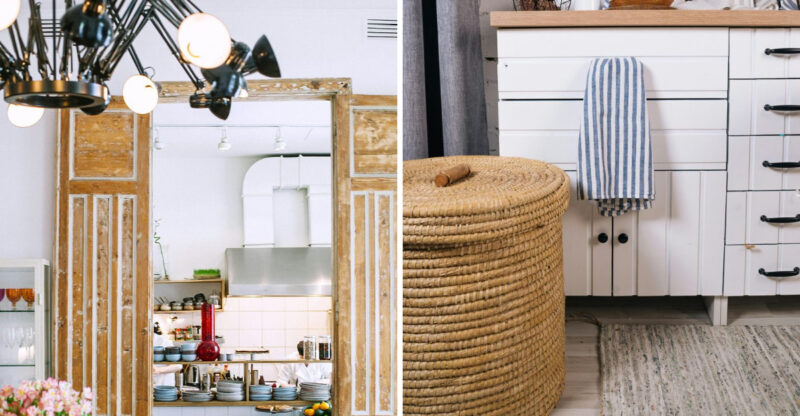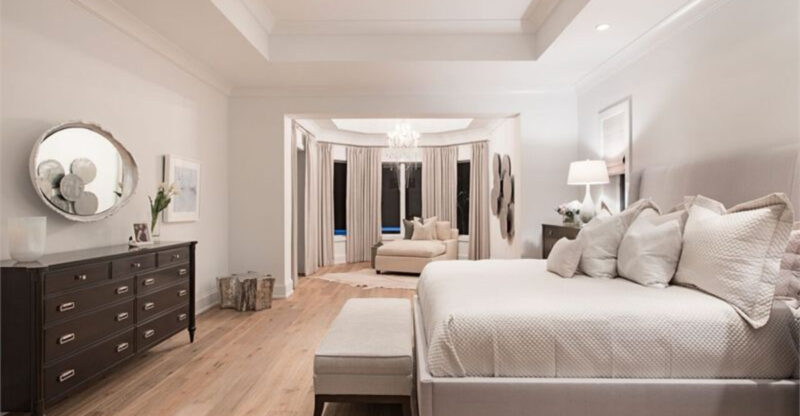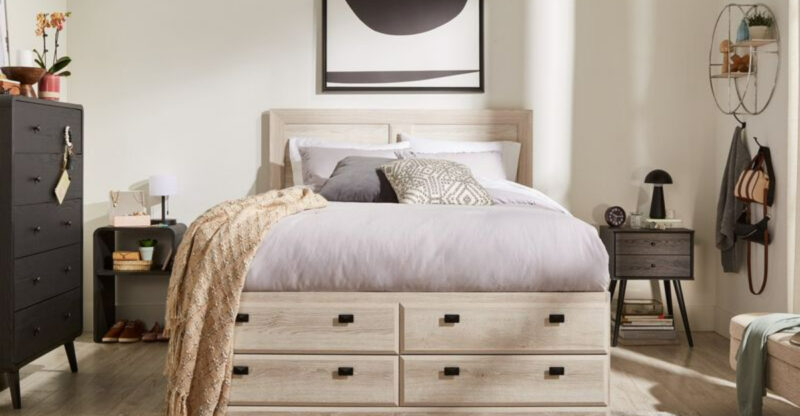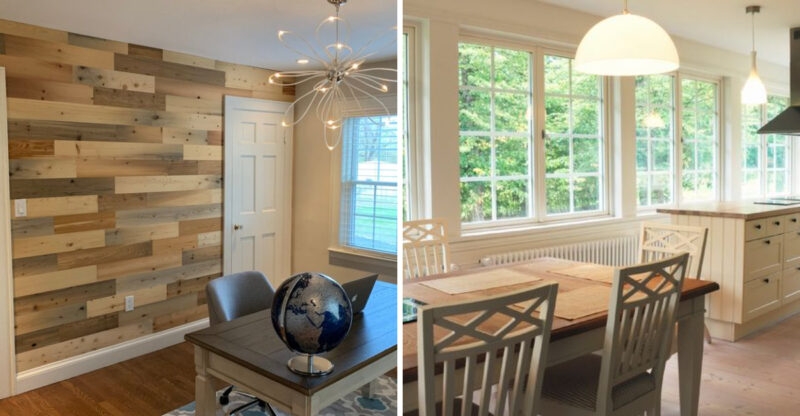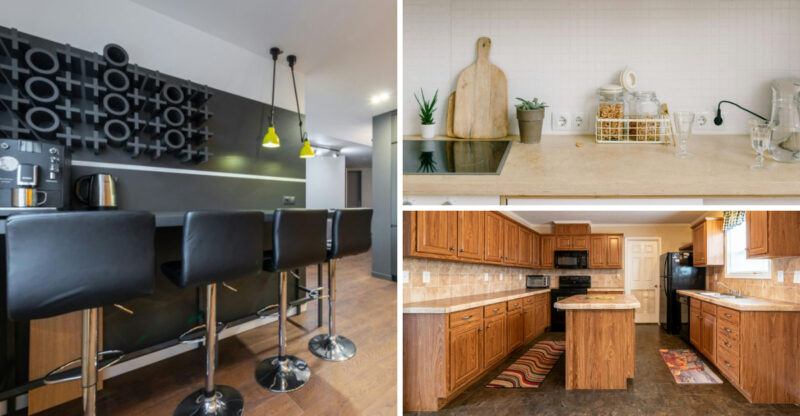According To Experts 10 Things Hurting Your Illinois Kitchen’s Style (And 10 That Help)
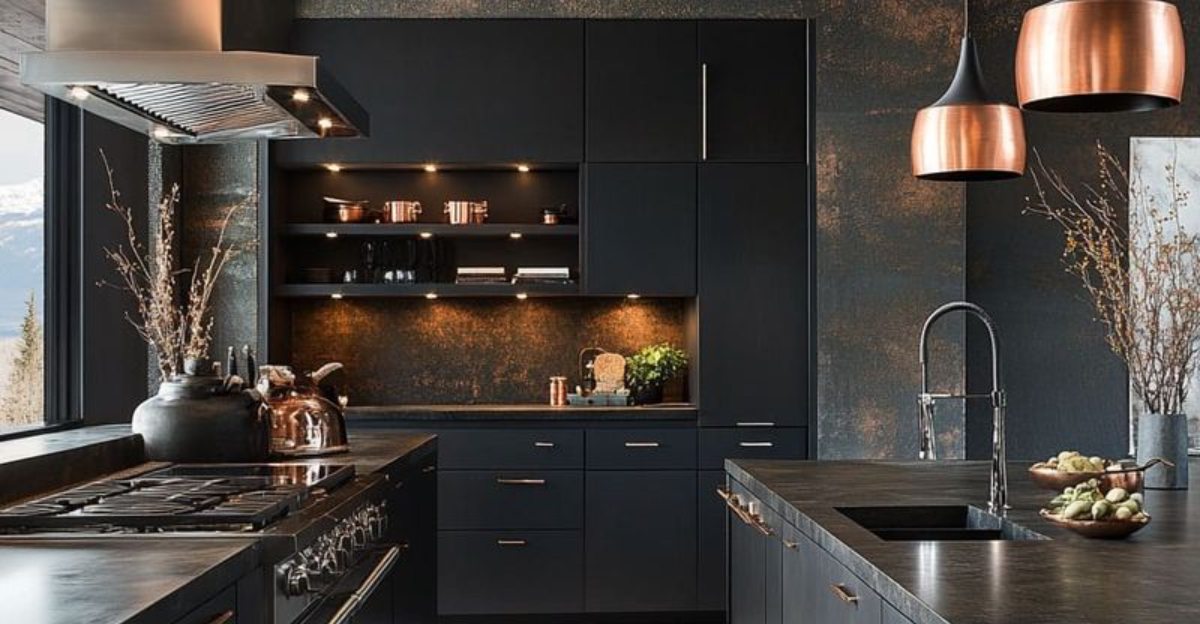
Illinois kitchens have their own unique flair, reflecting both Midwestern practicality and evolving design trends.
Many homeowners struggle with outdated elements that drag down their kitchen’s potential while missing opportunities to incorporate style-boosting features.
I’ve talked with leading Illinois interior designers to identify exactly what’s helping and hurting your kitchen’s aesthetic appeal in the Prairie State.
1. Dark Cherry Cabinets (hurting)
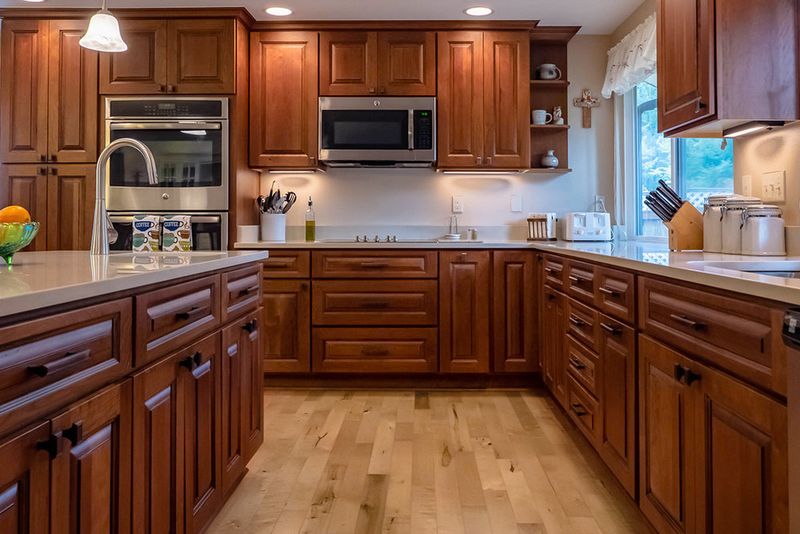
Those rich, mahogany-toned cabinets that dominated Illinois kitchens in the early 2000s are now making spaces feel smaller and dated. The heavy, traditional look creates a cave-like atmosphere, especially in our Midwestern homes that already battle limited natural light during long winters.
Designers point out that these cabinets absorb rather than reflect light. This intensifies the closed-in feeling that contradicts today’s open, airy kitchen ideal.
Swapping them out doesn’t always require a complete renovation. Cabinet refacing or quality paint can transform these dated elements into something fresh while saving thousands compared to full replacement.
2. Busy Granite Countertops (hurting)
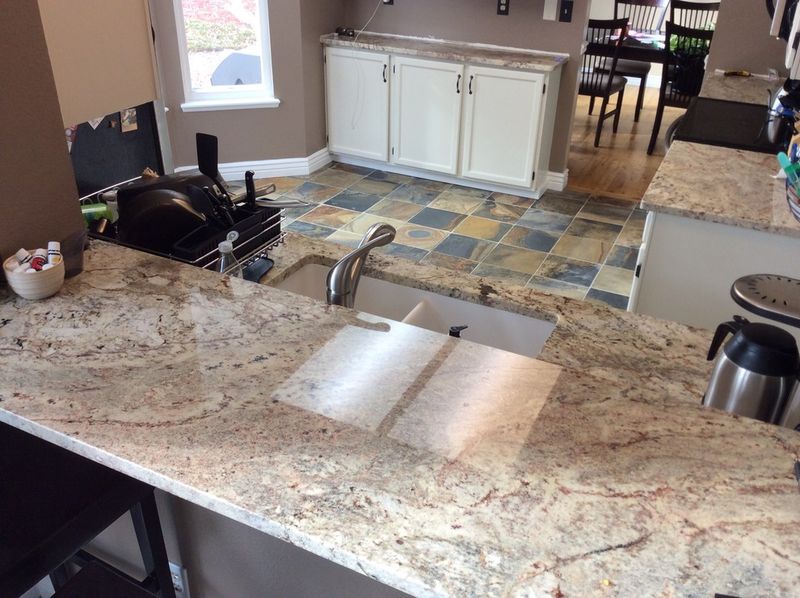
Remember when every Illinois kitchen renovation demanded those heavily speckled granite countertops? The multi-colored, high-movement patterns once signaled luxury but now create visual chaos that fights with other design elements.
These busy surfaces make your kitchen feel cluttered even when perfectly organized. The gold-brown-black combinations particularly common in Chicago-area homes clash with modern color schemes and make coordination with backsplashes nearly impossible.
Countertop trends have shifted dramatically toward cleaner, more consistent patterns. Even if you’re keeping granite for its durability, designers recommend selecting slabs with subtler movement and more neutral coloration for a timeless appeal that won’t look dated in five years.
3. Overly Ornate Lighting (hurting)
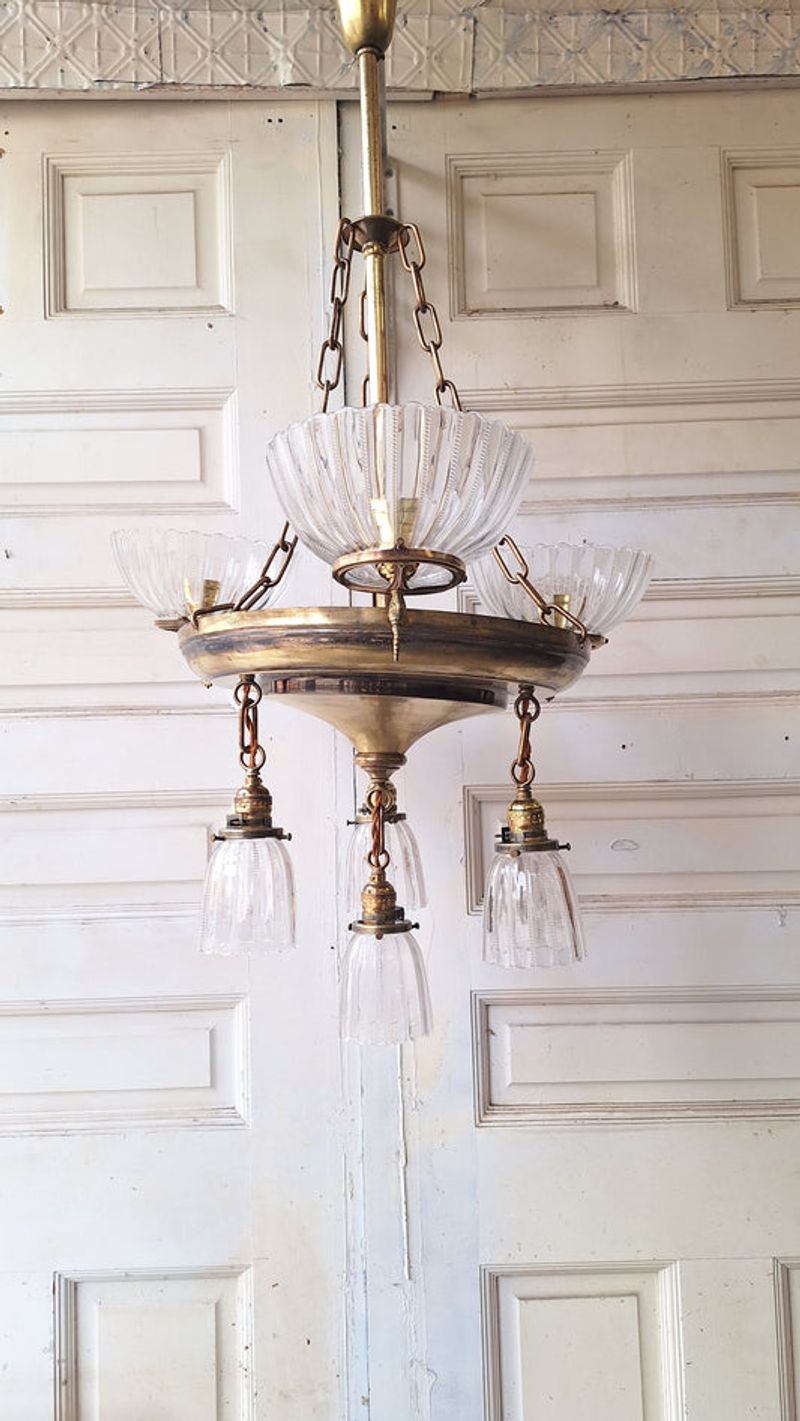
Mini-chandeliers and fussy pendant lights dripping with crystals are dragging down Illinois kitchen aesthetics. These showpieces might work in formal dining rooms but feel pretentious and impractical hovering above meal prep areas.
Illinois designers note these fixtures collect dust and grease particularly quickly in our seasonal climate. The elaborate designs create distracting shadows rather than providing the functional task lighting a working kitchen requires.
The scale is often problematic too. Oversized decorative fixtures visually lower ceiling heights, making kitchens feel cramped and top-heavy. Switching to streamlined fixtures with clean lines immediately modernizes the space while improving light distribution for chopping vegetables or reading recipes.
4. Heavy Window Treatments (hurting)
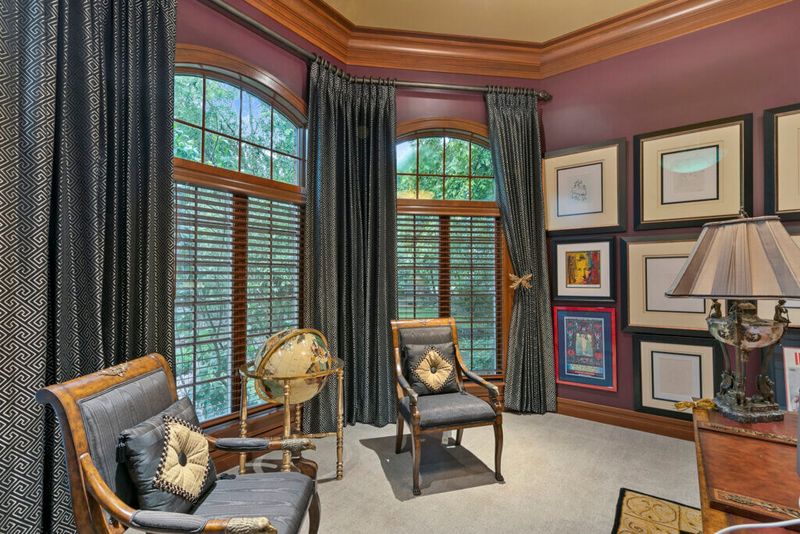
Valances, swags, and layered curtains might work in other rooms, but they’re suffocating Illinois kitchens. These fabric-heavy window treatments trap cooking odors, collect grease particles, and block precious natural light.
Midwestern humidity makes kitchens particularly susceptible to mildew issues when air can’t circulate properly around windows. Those elaborate treatments also become unintentional dust collectors in a space where cleanliness is essential.
Experts point out that the visual weight of these treatments makes ceilings appear lower. This creates a boxed-in feeling that contradicts the open, spacious feel most homeowners desire. Plus, the dated styles often clash with contemporary kitchen elements, creating an unintentional time-capsule effect rather than a cohesive design.
5. Cluttered Countertops (hurting)
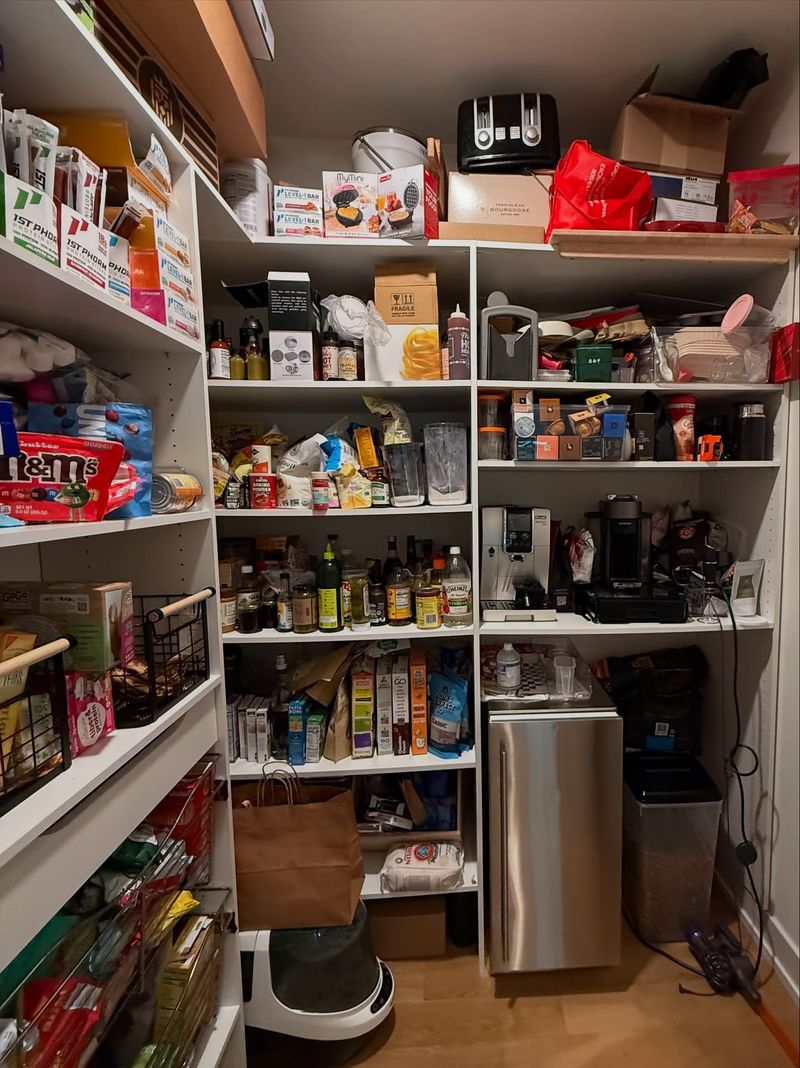
Countertop appliance collections have gotten out of hand in many Illinois kitchens. The coffee station with three different brewing methods, the stand mixer that’s used twice yearly, the air fryer, Instant Pot, and bread maker create a small appliance parking lot.
This visual noise immediately signals disorganization, regardless of how functional the arrangement might be. Chicago-area designers report that cluttered counters are the number one factor making kitchens feel smaller and less expensive than they actually are.
The Midwestern tendency toward practicality sometimes works against us here. Just because something might be useful doesn’t mean it deserves prime real estate. Creating designated storage for occasional-use appliances immediately elevates the space while actually making cooking more efficient.
6. Bright Neon Accents (hurting)
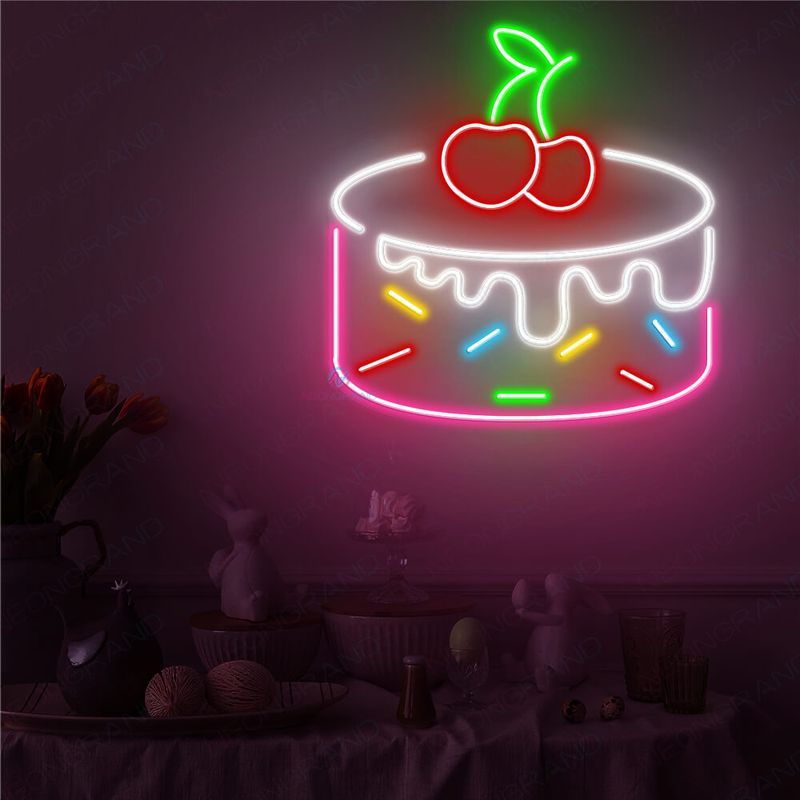
Those electric lime green canisters or hot pink mixer might have seemed fun at purchase, but they’re creating visual distraction in your Illinois kitchen. Loud, trendy colors quickly date a space and make it impossible to create a cohesive, sophisticated look.
Designers serving the Chicagoland area specifically mention that these bright pops fight against the natural Midwestern light. Our region’s often gray, diffused daylight makes neon colors appear particularly harsh and artificial.
These attention-grabbing elements also tend to make kitchens feel smaller and more chaotic. The eye doesn’t know where to rest when competing with fluorescent orange knife handles or electric blue appliances. Swapping these items for ones in more subdued tones immediately creates a more expansive, harmonious feeling.
7. Outdated Appliances (hurting)

Bisque, black, or white appliances are immediately aging Illinois kitchens. These non-stainless finishes, especially when mismatched, create a hodgepodge appearance that signals the space hasn’t been updated in decades.
Prairie State designers note that older appliances with their bulkier profiles consume valuable visual space. Their chunky handles and control panels make kitchens feel more cramped and utilitarian rather than stylish and inviting.
Energy efficiency is another consideration in our climate of temperature extremes. Those older refrigerators and dishwashers are likely costing significantly more to operate through our hot summers and frigid winters. Replacing even one major appliance with a sleeker, more current model can transform the entire kitchen’s appearance while potentially lowering utility bills.
8. Wallpaper Borders (hurting)
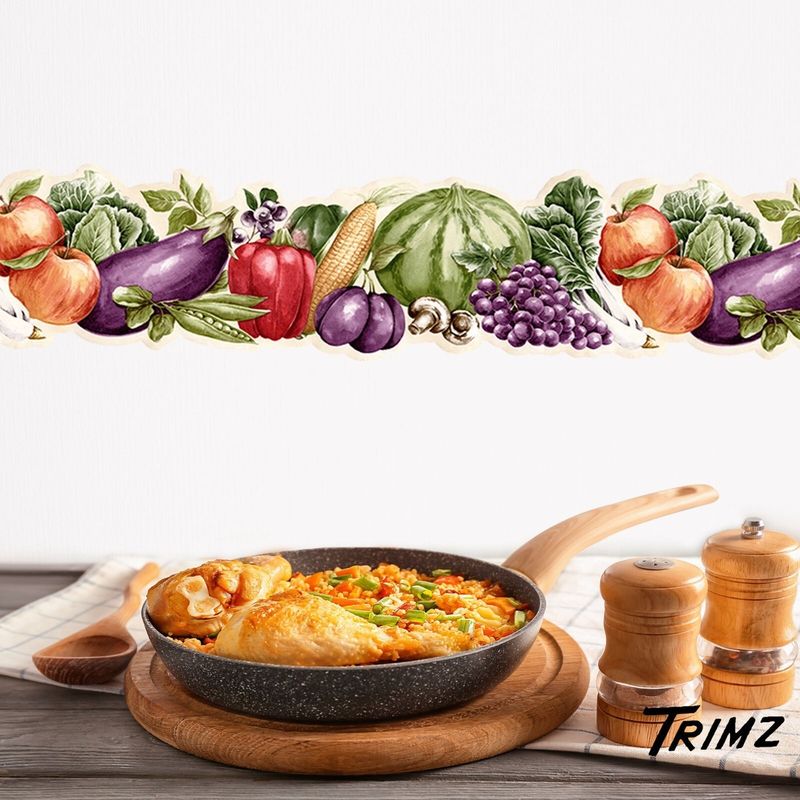
Those fruit-patterned or rooster-themed wallpaper borders running along the ceiling line are the quickest way to timestamp your Illinois kitchen as stuck in the 90s. These narrow decorative strips were once considered the perfect finishing touch but now read as fussy and outdated.
Local designers point out that these borders visually lower ceiling heights. This is particularly problematic in older Illinois homes that may already have standard 8-foot ceilings.
The dated patterns—often featuring country motifs, vines, or kitchen-themed illustrations—clash with any attempts at modern styling elsewhere in the space. Removing these borders (which thankfully isn’t particularly difficult) creates an immediate sense of visual relief and allows the eye to travel upward, making the entire kitchen feel more spacious and contemporary.
9. Overdone Tuscan Themes (hurting)
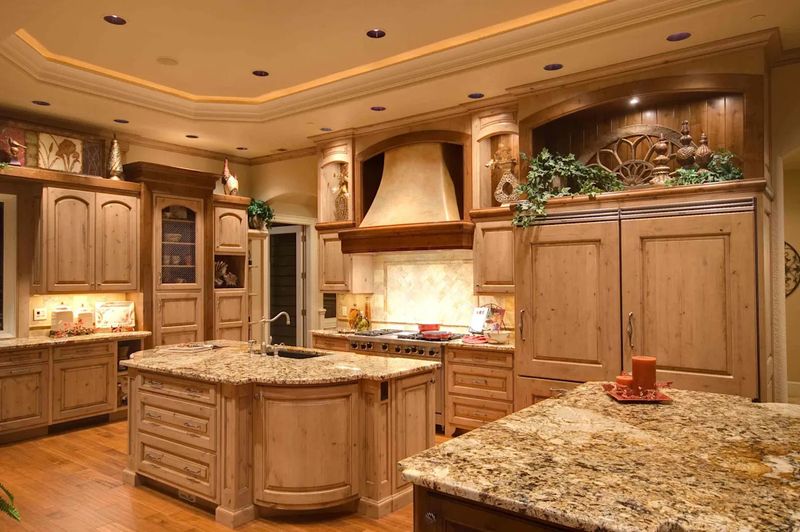
Faux-finished walls in terracotta hues, grape and olive motifs, and wrought iron accessories once signaled sophistication in Illinois kitchens. Now, these heavy-handed Mediterranean references feel like a theme park version of Italian style rather than a timeless design choice.
Midwestern designers note that these dark, warm color schemes fight against our natural light patterns. The result is spaces that feel perpetually dim and closed-in, especially during our already-dark winter months.
The themed approach also dates easily compared to more subtle design strategies. Grapevine cabinet pulls and olive branch stencils immediately signal early-2000s styling that makes your kitchen feel frozen in time. Simplifying these elements in favor of cleaner lines and more neutral backgrounds allows the architecture and quality materials to speak for themselves.
10. Plastic Sink Fixtures (hurting)
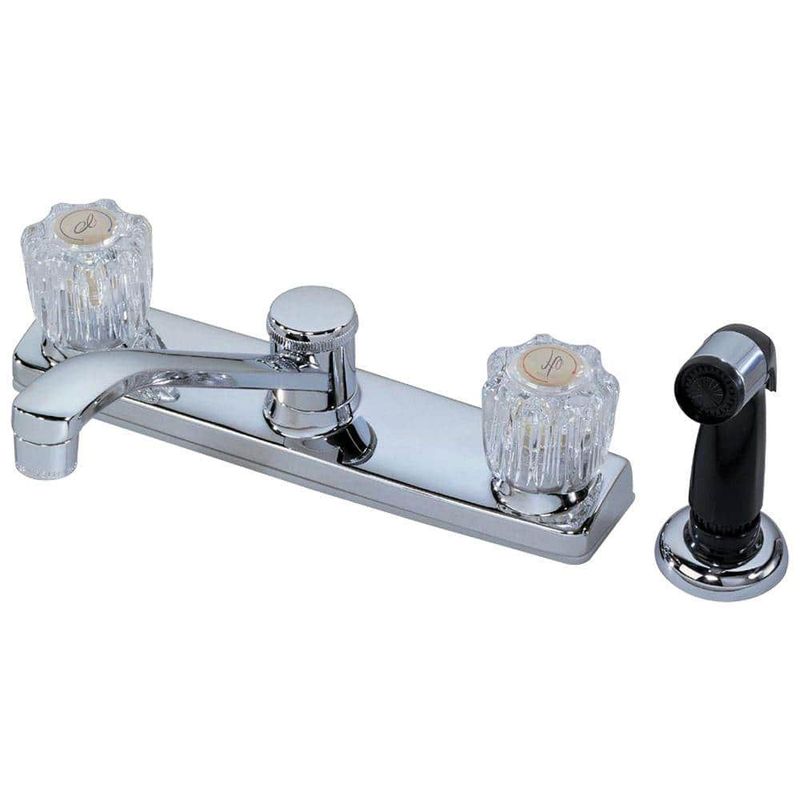
White plastic kitchen faucets with separate spray attachments scream budget renovation from decades past. These lightweight fixtures not only look cheap but also tend to yellow and crack over time in our Illinois climate with its dramatic seasonal humidity changes.
Designers serving Springfield and Chicago suburbs particularly note that these fixtures date kitchens more dramatically than almost any other single element. Their bulky profiles and visible wear patterns immediately signal neglect rather than intentional design.
The good news? Replacing a faucet is one of the most affordable kitchen updates with maximum style impact. Even modestly priced current models offer sleeker profiles, better functionality, and finishes that coordinate beautifully with other kitchen elements. This small change creates an immediate impression of thoughtful maintenance and contemporary taste.
11. Soft Neutral Cabinets (helping)
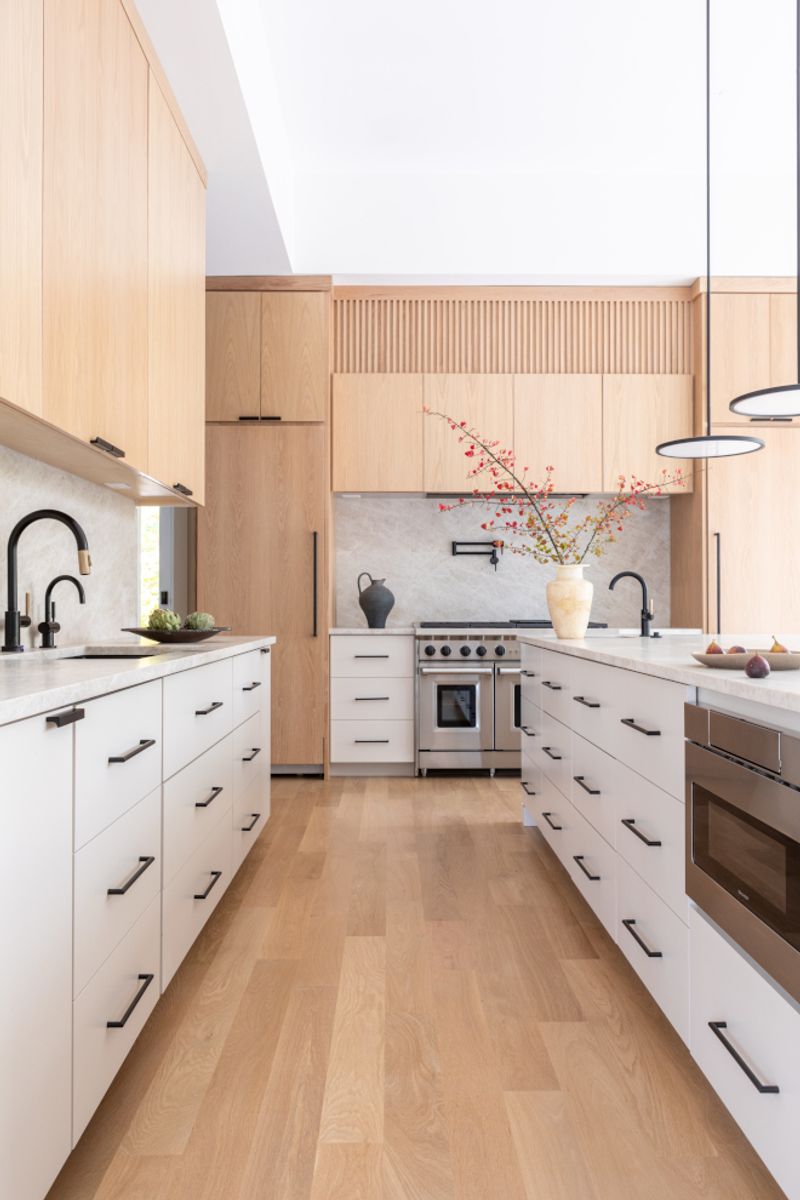
Warm whites, soft grays, and gentle beiges are breathing fresh life into Illinois kitchens. These versatile neutrals reflect our natural Midwestern light beautifully, making spaces feel larger and more welcoming throughout our distinct four seasons.
Chicago-area designers particularly recommend these softer tones over stark whites. They maintain brightness while feeling more inviting during our long winters when harsh whites can feel clinical and cold.
These neutral palettes also provide perfect backdrops for seasonal changes. Your kitchen can easily transition from summer’s farmer’s market bounty to fall’s warming elements without clashing with the base cabinetry. The timeless quality means they’ll look current for years, making them particularly smart investments for our Prairie State homes where resale value matters.
12. Quartz Countertops (helping)
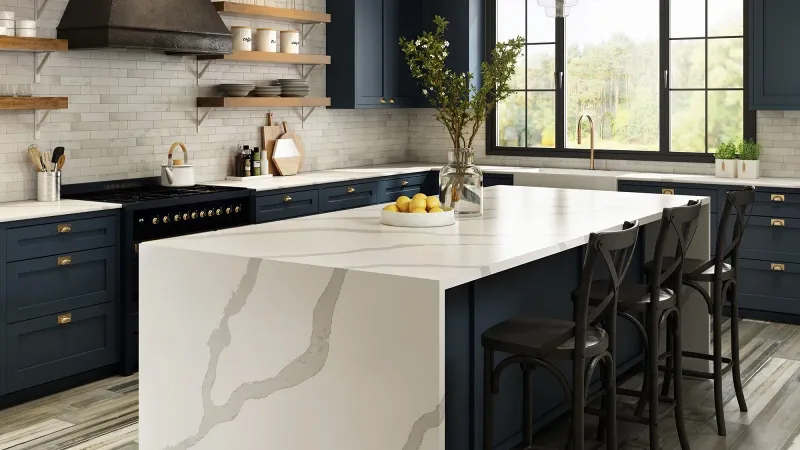
Engineered quartz surfaces are revolutionizing Illinois kitchens with their combination of beauty and practicality. Their consistent patterning creates visual calm while still offering enough variation to hide the inevitable crumbs and water spots in a busy family kitchen.
Durability is particularly valuable in our climate of extreme temperature fluctuations. Quartz resists the expansion and contraction that can damage other surfaces during our dramatic seasonal shifts from subzero winters to humid summers.
Designers serving Oak Park and Naperville specifically recommend quartz for its food-safe, non-porous qualities. These surfaces don’t harbor bacteria or require sealing, making them perfect for health-conscious Illinois families. The wide range of options—from marble-look whites to subtle concrete grays—allows for personalization without the visual busyness that dates so many kitchens.
13. Sleek Pendant Lights (helping)
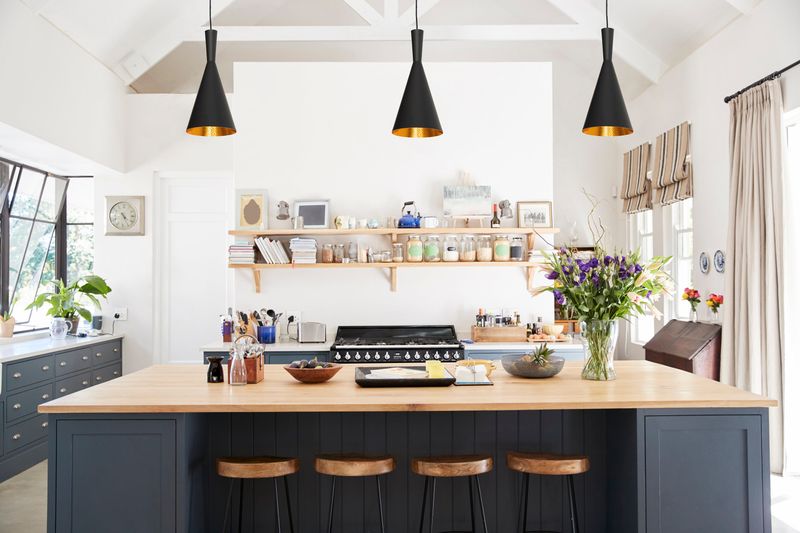
Streamlined pendant lighting is illuminating Illinois kitchens in both style and function. The clean, architectural forms provide focused task lighting where it’s needed most while creating visual interest without unnecessary ornamentation.
Designers working in Chicago’s northern suburbs particularly recommend these fixtures for their versatility. The simplified shapes complement multiple design styles, from industrial loft conversions to updated traditional homes.
The scale is crucial in our often modestly-sized Midwestern kitchens. These lighter-looking fixtures provide proper illumination without visually lowering ceiling heights or creating the top-heavy feeling of older decorative options. Many homeowners are selecting energy-efficient LED versions, which is particularly smart given Illinois’ relatively high electricity costs and environmental consciousness.
14. Minimal Window Coverings (helping)
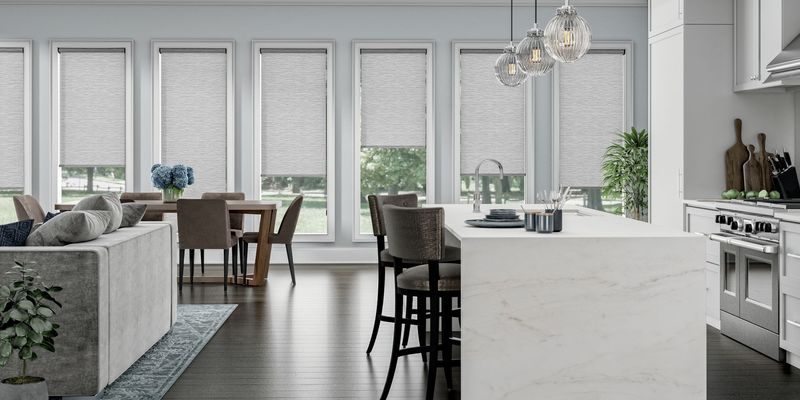
Simple roller shades or bare windows are bringing much-needed light into Illinois kitchens. This minimalist approach maximizes natural illumination—particularly valuable during our shorter winter days when every ray of sunshine matters.
Practical benefits abound beyond aesthetics. Streamlined window treatments collect less dust and cooking residue, making maintenance easier in our seasonal climate where windows stay closed for months during extreme weather.
Chicago-area designers note that this approach also showcases architectural window details often found in our historic housing stock. Rather than hiding beautiful trim or unique window shapes behind heavy fabrics, the minimalist approach celebrates these original features. For privacy concerns, simple roller or roman shades in neutral fabrics provide coverage when needed without competing with other design elements.
15. Clear Counter Spaces (helping)
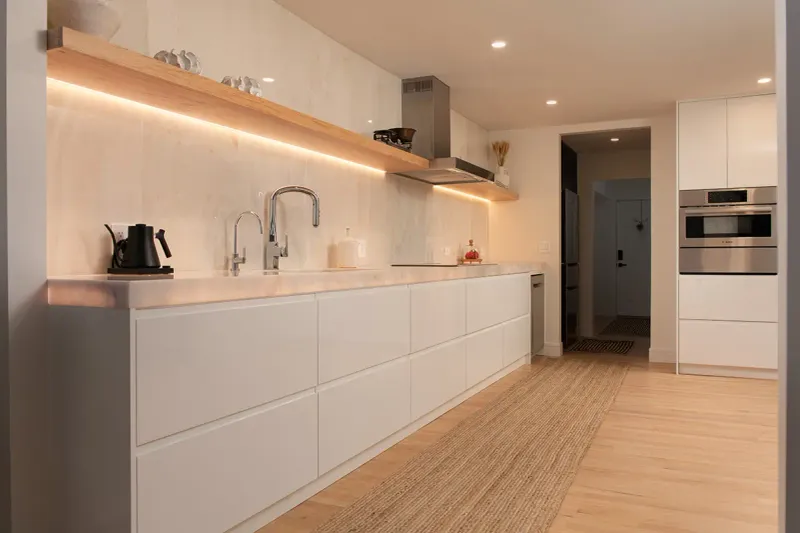
Empty counter expanses are the luxury Illinois homeowners increasingly prioritize. These clean, uncluttered surfaces create visual breathing room that makes even modest-sized kitchens feel more spacious and intentionally designed.
Chicagoland designers note that this approach reflects a shift toward mindfulness in home environments. Clearing visual noise reduces stress and creates a more peaceful cooking experience, particularly valuable in our busy Midwestern households.
Achieving this look requires thoughtful storage solutions rather than simply hiding everything before guests arrive. Pull-out drawers for small appliances, dedicated cabinets for cooking tools, and pantry organization systems allow functionality without sacrificing aesthetics. The result is a kitchen that feels purposeful rather than sterile, with carefully selected items earning their place in the visible landscape.
16. Subtle Color Pops (helping)
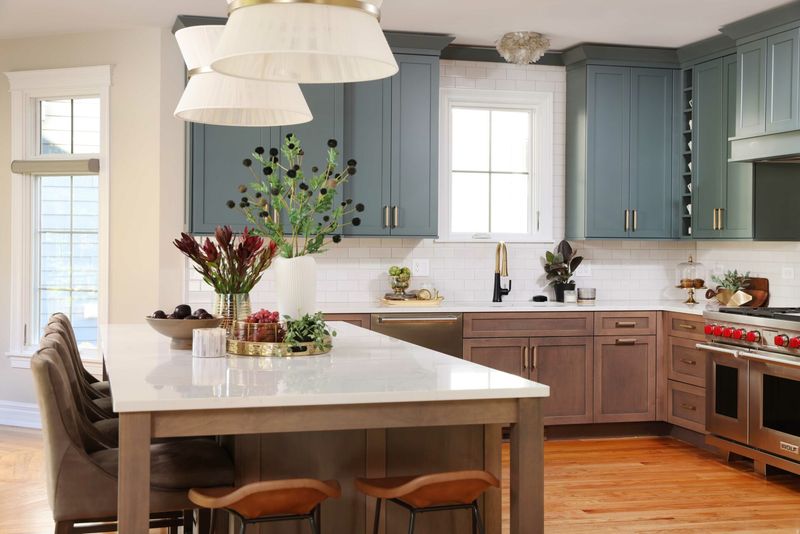
Thoughtfully placed color accents are energizing Illinois kitchens without overwhelming them. Think sage green dish towels, a collection of blue pottery, or amber glass containers—these measured doses of color create interest while maintaining sophistication.
Designers working in Springfield and Peoria specifically recommend this approach for our Midwestern sensibilities. The subtle strategy provides personality without committing to trends that quickly date or overwhelm a space.
The flexibility is particularly valuable in our seasonal climate. These smaller color elements can easily be swapped as seasons change or as personal preferences evolve, without requiring major renovations. A kitchen with neutral foundations and thoughtful color accents creates a backdrop that works equally well for summer’s garden bounty and winter’s holiday gatherings.
17. Stainless Appliances (helping)
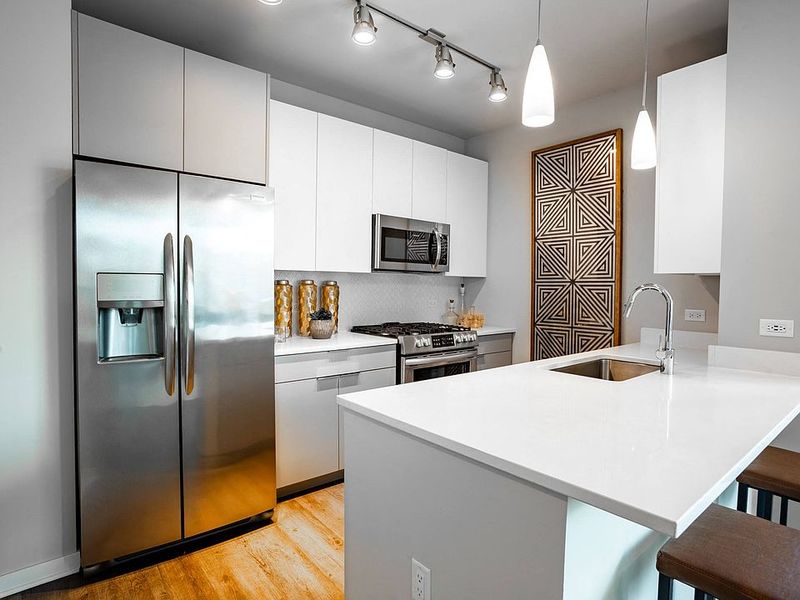
Stainless steel appliances continue to be the gold standard in Illinois kitchens, and with good reason. Their neutral metallic finish complements virtually any cabinet color or countertop material, creating a cohesive look that transcends passing trends.
Durability matters in our climate of temperature extremes. These surfaces stand up to the dramatic seasonal shifts from humid summers to dry winters without warping or discoloring like some alternative finishes.
Newer models have addressed the fingerprint concerns that once plagued this finish. Many Illinois homeowners are selecting smudge-resistant versions that maintain their clean appearance even in busy family kitchens. The professional look signals quality and attention to detail, immediately elevating the perceived value of the entire kitchen regardless of its size or age.
18. Simple Backsplashes (helping)
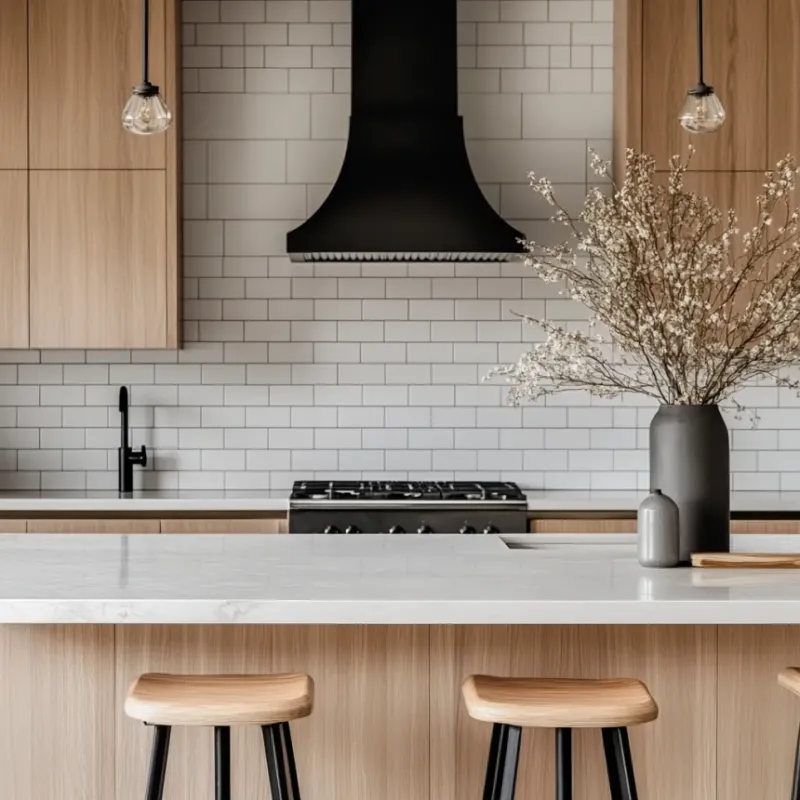
Clean, unfussy backsplashes are transforming Illinois kitchens from busy to breathtaking. Large-format subway tiles, solid quartz extensions, or simple glass panels create serene backgrounds that allow other design elements to shine.
Chicago designers particularly recommend this approach for visual continuity. The simplified surfaces create an uninterrupted flow that makes kitchens feel larger and more cohesive, especially valuable in our older housing stock with sometimes challenging layouts.
Maintenance benefits are significant in our climate. Fewer grout lines mean less opportunity for mold growth during humid summers, while smooth surfaces are easier to keep clean year-round. The timeless quality of these simpler installations also means they won’t look dated as trends change, making them smart investments for Illinois homeowners thinking about eventual resale value.
19. Matte Black Fixtures (helping)
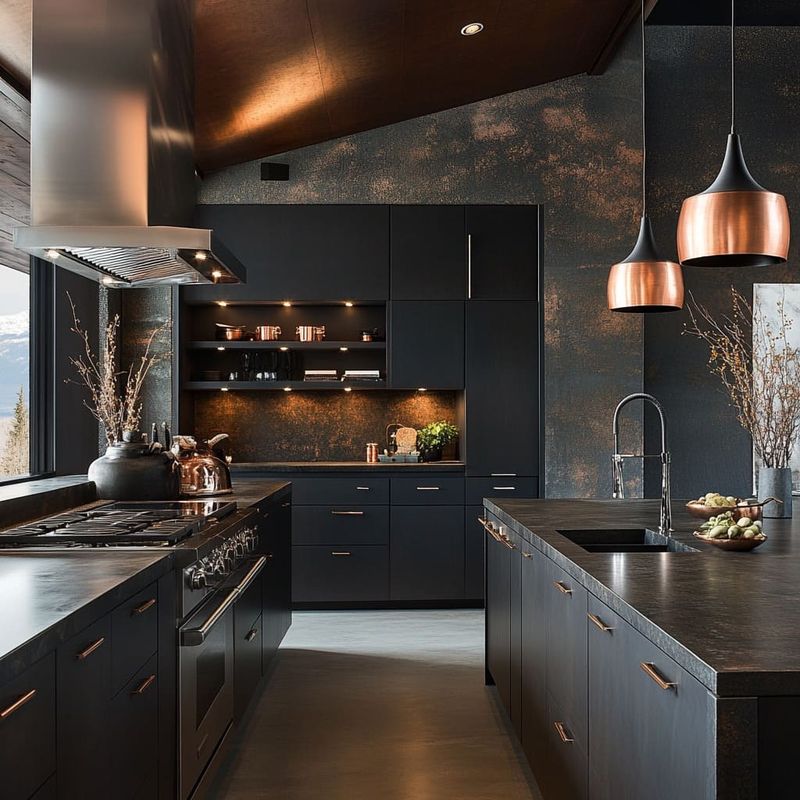
Sophisticated black faucets, cabinet pulls, and lighting are adding architectural interest to Illinois kitchens. The matte finish provides contrast without glare, creating focal points that feel intentional rather than flashy.
Designers serving Evanston and Oak Park note that these darker elements ground spaces beautifully. They provide visual weight that balances lighter cabinets and countertops, creating more dynamic compositions that feel professionally designed.
Durability is another advantage in our climate. These finishes hide water spots and fingerprints better than their shiny counterparts, maintaining their good looks through seasonal humidity changes. The contemporary-yet-timeless quality makes them particularly smart choices for Illinois homeowners who want current style without chasing trends that will look dated in a few years.
20. Natural Light Focus (helping)

Maximizing sunshine is revolutionizing Illinois kitchen designs. Expanded windows, glass doors, and even strategically placed skylights are being prioritized to capture every possible ray during our limited daylight months.
This approach reflects our Midwestern appreciation for seasonal changes. The enhanced connection to outdoor light patterns helps maintain wellbeing during long winters while celebrating summer’s extended daylight hours.
Chicago-area designers note that improved window technology makes this strategy more practical than ever. Energy-efficient glazing addresses concerns about heat loss during brutal January cold snaps or excessive solar gain during July heat waves. The resulting light-filled spaces not only look more appealing but actually function better, with improved visibility for cooking tasks and a more uplifting environment for family gatherings regardless of the weather outside.

